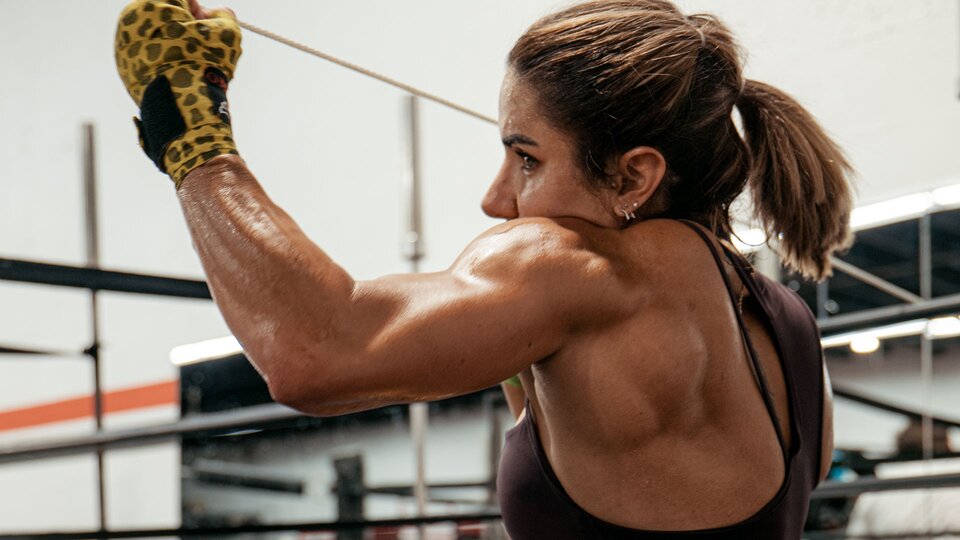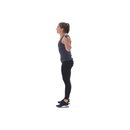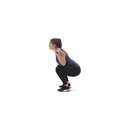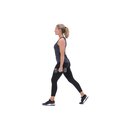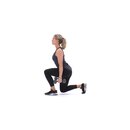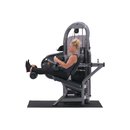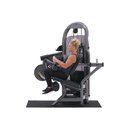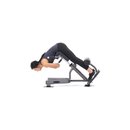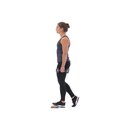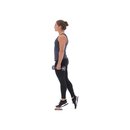Are Isolation Movements Better for Muscle Growth? | Which Comes First: Strength or Hypertrophy? | Do I Need Rest Days? | Overtraining vs.Overreaching | How to Balance Volume and Intensity | The Power of Autoregulation
In our pursuit to become our strongest, most jacked selves, is it better to train using heavy weights for fewer repetitions? Or should we be using lighter weights for more repetitions? And is one method superior to the other?
As always, it depends.
The truth is that the answer lies somewhere in between those two extremes and is heavily dependent on a lifter’s individual goals and experience level. It’s time to clear up some misconceptions regarding strength and hypertrophy.
What the Science Says
In the battle of strength versus hypertrophy, there is some evidence suggesting that we might not have to choose between the two. Some studies have shown no significant difference between using high-rep or low-rep training when it comes to muscle growth or gaining strength when overall training volume is equal.
On the other hand, multiple research studies point to the concept of training specificity. That is, training with heavier weights for fewer reps (2-4) results in statistically greater gains in 1RM, and training with moderate weights for higher reps (8-12) leads to statistically greater gains in muscle hypertrophy.
This does make sense—if you practice maximal force production using heavier weights, you’re going to improve your maximal force production. If strength is your goal, then the heavy-weights lower-reps approach needs to take precedence at some point during your training program.
If strength and hypertrophy are your goals, you need the supplements to make them happen!
Contrary to strength, there is no ideal rep range for muscular hypertrophy. As long as the target muscle is experiencing a chronic progressive overload of mechanical tension, it will grow—whether that’s with 2-4 reps, 8-12 reps, or 15-20 reps. Of course, other variables must also be optimized, including energy balance and recovery.
How This Impacts Training
Elite trainers and coaches help their strength athletes lift like powerlifters, move like weightlifters, and look like bodybuilders. A well-rounded strength athlete should therefore train both for strength and hypertrophy rather than choosing one or the other.
That being said, having a robust foundation in strength carries over to both performance and aesthetics.
Hypertrophy is muscle fiber growth in response to working against forces we are not used to. To stimulate hypertrophy, we have to be strong enough to challenge the working muscle—more specifically, we must challenge the large muscle fibers that are only recruited when high forces are required. We find those high forces by lifting relatively heavy weights or when fatigue has exhausted all of the smaller muscle fibers.
Where Does Strength Come In?
You must build strength in order to stimulate those large fibers that grow in response to training. This is partly why beginners can see rapid strength development without much hypertrophy in the first few weeks of training. As lifting skills are honed, force production improves. This is also why we must continue to challenge ourselves with heavier weights over time—a concept known as progressive overload.
We cannot totally separate strength from hypertrophy since we need more force over time to continue stimulating muscle growth. In turn, hypertrophy augments strength since a bigger muscle has the potential to be a stronger one.
Putting Theory into Practice
Here’s the take-home message: If you’re training to lose fat and build muscle, but you don’t emphasize strength development, you’re missing an important piece of the body composition puzzle.
There isn’t a magic rep range to maximize hypertrophy, which means muscle growth is possible with a wide variety of weights and repetition schemes. In strength and powerlifting, intensity is measured by how many reps you feel you have in reserve after each set, known as reps in reserve or RIR. Lower RIR equals higher proximity to failure and therefore a higher intensity.
Research suggests that moderate- and high-intensity sets are both equally effective in building muscle and gaining strength.
What does this look like for training? Here’s an example workout from our HYBRID Build program that takes classic powerbuilding and adds a twist. This workout would be appropriate for both beginners and intermediate lifters.
Notice how the back squat, our high-priority lift for the session, is performed at a relatively lower rep range at moderate intensity to keep the rate of force production high. On the other hand, the accessory work is performed at a relatively higher rep range and higher intensity.
Add this workout to your program for an effective combination of strength and hypertrophy work.
